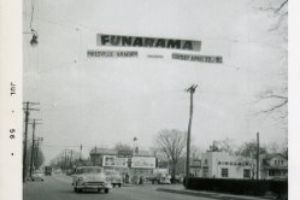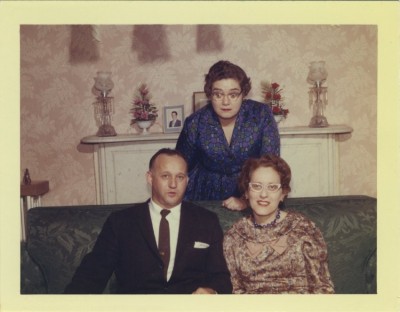Baltimore Suburbia: a Foreign Land We Want to Discover

The Go-Between, a romantic novel published by L.P. Hartley in 1953, opens with the now famous line, “The past is a foreign country: they do things differently there.” Many historians now take this concept for granted, and not without good intention. The idea that the past is a foreign country means that as historians we should not presume that our own values can be read seamlessly into the times and places we research. We should allow the past to speak in its own language, through the ideas and images of its own time.
It is easy to get excited about trips to foreign places. They are pregnant with possibility: new worlds to discover, new cultures to appreciate, new foods to savor. A journey into the foreign past is a journey into the unknown. It has the ability to surprise us. Jewish boxers in interwar Baltimore? Who knew?! The foreign past can challenge our understandings of who we are and where we have been.

When we work on the history of the relatively recent past, however, the sense of the foreign can get lost. The recent past is familiar to those who lived it. How can something be exciting, undiscovered or full of possibility, when it took place right here in Baltimore, just forty years ago? Well, to those of us who did not live it, and even for those who did, recent history can still be full of surprises. The Jewish Museum of Maryland is collecting pictures of Jewish life in Baltimore’s suburbs during the 1950s and 1960s. That means pictures of children playing in the backyard, Mom and Dad standing proudly next to the “Sold” sign, suburban neighborhoods, family simchas, and gatherings in the kitchen, living room, dining room and basement. In short, all those photographs that most family albums are teeming with. To you, these pictures might not seem very interesting, but to others who had different experiences of suburban life, or who never experienced it personally, it is a foreign place waiting to be discovered.

For me, Baltimore’s suburbs are quite literally foreign country. I came to America from the U.K. in 2008 to begin working on my PhD, and subsequently began working at the JMM on our suburbia project. I’m fascinated to see how your images of Baltimore compare to the Jewish suburbs of England that I am more familiar with. For the class that we are teaching at Johns Hopkins University this semester, in which we are developing a travelling exhibit about the move to suburbia, the suburbs of the 1950s and 1960s are a foreign land that the students know only through family stories, and through films and TV shows. Yet the fact that the success of the show Mad Men has inspired stores to produce 1950s themed clothing lines shows us that the foreign land of the 1950s and 1960s is a place that these young people are keen to discover.

Even for those who were present, who made the history of the Jewish suburbs of Baltimore in the 1950s and 1960s, there might still be a foreign land just off of Liberty Heights or Reisterstown Road that you never knew about. While the connotations of suburbia often suggest uniformity, the reality is that Baltimore’s Jewish suburbs are diverse places; full of different kinds of houses built at different times by different people and lived in by different kinds of families. Your photographs of your experience of suburbia might seem mundane to you, but they might be a foreign place to someone whose experiences of suburban life were different.
So please consider bringing your pictures of suburbia to show us! We are also interested in hearing your stories. If you would be willing to sit and talk with me about the different places where you lived in Baltimore during the 1950s and 1960s, please contact me at ltomes@jewishmuseummd.org, or by calling the museum and leaving your name and number. This foreigner is looking forward to discovering new lands through your eyes.

